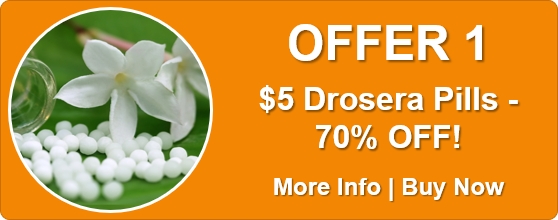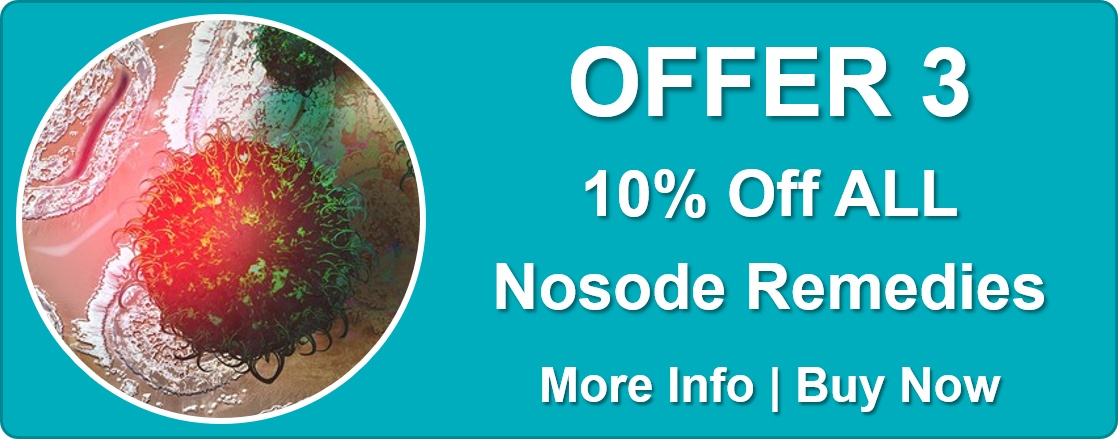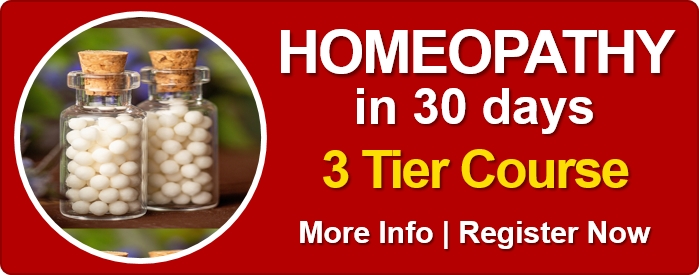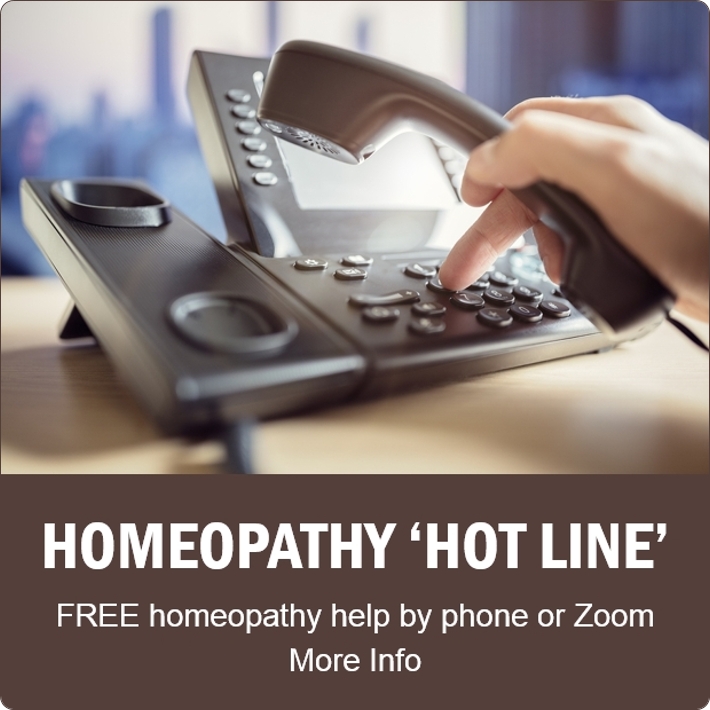Homeopathic Glossary
Accessory Symptom: When a remedy improves existing symptoms but causes new, temporary symptoms to appear due to an imperfect match. These new symptoms, like abdominal rumbling after joint pain relief, resolve once the remedy is adjusted or discontinued.
Acute Illness: A condition that may (or may not) be intense but is of short in duration. Examples of this are: flu, broken bones, fever etc. In some cases, acute illness can become a chronic disease if nor appropriately treated.
Aggravation: A noticeable introduction of symptoms, or an intensification of existing symptoms, by a homeopathic remedy.
Agrohomeopathy: The use of homeopathic remedies with plants or soil to enhance growth, treat diseases, or manage pests.
Allopathy: From the Greek ‘allos’, other + ‘pathos’, disease. Allopathic treatments use medicines that produce symptoms different to those to be cured. These medicines produce a different or opposite effect in contrast to the similar effect of a homeopathic treatment.
Antidote: A substance or remedy that counteracts or neutralizes the effects of a homeopathic remedy.
Antipathy: Treatment that opposes disease symptoms directly (e.g., using sedatives for insomnia), contrasting with homeopathy’s similarity-based approach.
Aphorisms: Numbered paragraphs in Hahnemann’s Organon, each stating a principle or truth about homeopathy.
Bach Flowers: A system of 38 flower essences developed by Dr. Edward Bach to address emotional and mental states, related to but distinct from homeopathy, using sub-material doses.
Biphasic Action: The dual response to a homeopathic remedy, with an initial primary response (temporary symptom increase) followed by a secondary healing response.
Bioresonance: A controversial therapy using electromagnetic frequencies to diagnose or treat imbalances, sometimes associated with homeopathy but not a classical practice.
Boenninghausen: Clemens von Bönninghausen, a 19th-century homeopath who developed the first repertory and advanced case-taking methods.
Cancer Miasm: A controversial miasm associated with chronic degenerative diseases, including cancer, indicating a deep predisposition to cellular dysfunction.
Case-Taking: The process of gathering detailed patient information (symptoms, modalities, history) to select an appropriate remedy.
Causation: The specific event or factor (e.g., injury, infection) triggering a disease, critical in homeopathic case-taking for remedy selection.
Centesimal Scale: A potency scale where remedies are diluted 1:100 per step (e.g., 30C), indicating the number of dilution and succussion cycles.
Chronic Problems: Persistent or recurring health conditions treated with remedies addressing the individual’s overall symptom profile.
Classical Homeopathy: The traditional practice of homeopathy based on Hahnemann’s principles, using a single remedy matched to the totality of symptoms to stimulate the vital force.
Combination Remedy: A preparation containing multiple remedies, used for broad symptom relief, though less specific than single-remedy prescribing.
Common Symptom: A symptom typical of a specific disease, experienced by most people with that condition (e.g., itching in poison ivy).
Complementary Remedy: A remedy that enhances or completes the action of another remedy, often prescribed in sequence to support healing.
Complete Symptom: A symptom comprising etiology, location, sensation, modalities, and concomitants, used for precise remedy selection.
Concomitant: A symptom occurring simultaneously with the main complaint, forming part of a complete symptom.
Constitutional Prescribing: Selecting a remedy based on a patient’s overall physical, mental, and emotional characteristics, often for chronic conditions.
Contagion: An infectious state transferred by contact, considered in homeopathic case-taking for disease etiology.
Conventional Medicine: A system of medical treatment using drugs, surgery, or other interventions to directly suppress or eliminate disease symptoms, often contrasting with homeopathy’s holistic approach.
Cure: The complete restoration of health through homeopathy, addressing the root cause of symptoms and aligning with the vital force.
Decimal Scale: A potency scale where remedies are diluted 1:10 per step (e.g., 6X), used for lower potencies in homeopathic preparations.
Diathesis: A mental or physical predisposition to disease, often inherited or acquired, influencing remedy selection.
Direction of Cure: The order in which symptoms resolve during treatment, typically from vital to less vital organs, inside to outside, and top to bottom.
Disease: A state of dis-ease or ill health.
Dissimilar Aggravation: A worsening of symptoms due to a poorly matched remedy, producing new or unrelated symptoms, requiring remedy change.
Doctrine of Signatures: The concept that a substance’s appearance or characteristics indicate its therapeutic use for specific conditions.
Dose: The administration of a remedy (pills, drops, or inhalation), with frequency based on symptom intensity and potency.
Drainage Remedy: A low-potency remedy used to support organ function or detoxification before prescribing a deeper-acting remedy.
Drainage Therapy: The use of low-potency remedies to promote detoxification or organ support, often as a precursor to deeper homeopathic treatment.
Dynamisation: The process of potentisation, involving dilution and succussion, to enhance a remedy’s energetic effect.
Dynamism: The philosophical concept in homeopathy that health and disease are governed by dynamic, non-material forces, such as the vital force, influencing remedy action.
Elimination Rubric: A repertory rubric used to exclude remedies not associated with a specific symptom, narrowing down remedy choices.
Energetic Medicine: Remedies that act via an energetic imprint rather than chemical substances, especially at high potencies.
Etiology: The cause of a disease, considered a key aspect of a complete symptom in homeopathic case-taking.
First-Aid Homeopathy: Use of remedies for immediate minor injuries or emergencies (e.g., cuts, shocks), emphasizing rapid symptom relief.
Follows Well: A remedy that effectively follows another in treatment, enhancing or continuing its therapeutic action without interference.
Generals: Symptoms affecting the whole person (e.g., energy levels, temperature preferences), prioritized in remedy selection for their broad impact.
Genus Epidemicus: A remedy effective for most cases in a specific epidemic, used for treatment or prophylaxis.
Hahnemann: Samuel Hahnemann, the founder of homeopathy, who developed its principles and wrote the Organon of the Medical Art.
Healing Crisis: A temporary intensification of symptoms during homeopathic treatment, indicating the body’s effort to heal and rebalance.
Hering’s Law: A principle stating that healing occurs from the most recent symptoms to older ones, complementing the direction of cure.
Homeopathic Aggravation: A temporary worsening of symptoms after taking a remedy, often indicating the body’s response, followed by improvement.
Homeopathic Kit: A collection of commonly used remedies for home use, designed for first-aid and acute conditions.
Homeopathic Provings: Controlled tests where healthy individuals take a substance to record symptoms, forming the basis of a remedy’s symptom profile.
Homeopathy: A holistic medical system that uses highly diluted substances to stimulate the body’s vital force to heal, based on the principle of “like cures like.”
Homeoprophylaxis: The use of homeopathic remedies to prevent disease, often administered orally for epidemic prophylaxis.
Hormesis: A biological phenomenon where low doses of a substance stimulate a beneficial response, while higher doses are harmful, sometimes linked to homeopathy’s minimal dose principle.
Hypersensitivity: Abnormal overreaction to remedies or environmental stimuli, managed with diluted doses or olfaction.
Imponderable: A remedy prepared from non-material sources (e.g., sunlight, magnetic fields), used to address specific energetic imbalances.
Imponderables: Remedies derived from non-material energy sources (e.g., sunlight, X-rays), used for energetic imbalances, often in subtle or hypersensitive cases.
Inimical Remedy: A remedy that may interfere with or counteract another remedy’s action, to be avoided in close succession.
Intercurrent Remedy: A remedy given temporarily to address an acute flare-up or obstacle during chronic treatment, restoring treatment progress.
Isopathy: A homeopathic approach using remedies prepared from the same substance causing the condition (e.g., pollen for pollen allergy).
Kent: James Tyler Kent, a prominent homeopath who developed a widely used repertory and emphasized constitutional prescribing.
Keynotes: Distinctive or prominent symptoms of a remedy that guide its selection.
Kingdoms: The broad categories of remedy sources in homeopathy, including plant, mineral, animal, nosodes, sarcodes, and imponderables.
Korsakovian: A method of remedy preparation using a single container for serial dilutions, developed by Semyon Korsakov, often denoted with a “K” (e.g., 30K).
Law of Similars: The principle that a substance causing symptoms in a healthy person can treat similar symptoms in a sick person.
Like Treats Like: A synonym for the law of similars, where substances causing symptoms in healthy individuals are used to treat similar symptoms in the sick.
Liquid Remedy: A homeopathic remedy prepared as a liquid solution, often used for flexible dosing or for hypersensitive patients.
LM Potency: A high-dilution potency scale (1:50,000) developed by Hahnemann for gentle, frequent dosing, often used in chronic cases.
Location: The specific area where a symptom is experienced, a component of a complete symptom in case-taking.
Materia Medica: A reference listing remedies and their symptom profiles, used to select treatments based on patient symptoms.
Mental-Emotional Symptoms: Psychological or emotional symptoms (e.g., grief, anxiety) used to guide remedy selection, often as critical as physical symptoms.
Miasm: A deep-seated, inherited, or acquired predisposition to chronic disease, influencing remedy selection for long-term conditions.
Minimal Dose: The smallest amount of a remedy needed to stimulate healing, a key homeopathic principle to avoid overstimulation.
Modalities: Factors that worsen (<) or improve (>) symptoms, guiding remedy choice (e.g., pain < motion, > rest).
Mother Tincture: The initial concentrated extract of a substance (e.g., plant, mineral) used as the starting point for homeopathic dilutions.
Nanotherapy: The theory that homeopathic remedies may act via nanoparticles retained after dilution, a controversial explanation for their efficacy.
Never-Been-Well-Since: A chronic condition traced to a specific event (e.g., trauma, infection), critical in case-taking to identify the disease’s origin.
Nosode: A remedy prepared from diseased tissue, microorganisms, or discharges, used for treatment or prophylaxis.
Olfaction Dosing: Inhaling a remedy’s vapor, used for hypersensitive patients to minimize reactions, described in Hahnemann’s Organon.
Organ Therapy: The use of remedies (often sarcodes) to support or stimulate specific organs or systems, focusing on localized dysfunction.
Organon of the Medical Art: Hahnemann’s foundational text outlining homeopathy’s principles through 294 aphorisms.
Organopathic Remedy: A remedy targeting a specific organ or system, used when symptoms are localized rather than systemic.
Organopathy: A homeopathic approach focusing on remedies to support or heal specific organs or systems, often using low potencies or sarcodes.
Palliation: Temporary relief of symptoms without addressing the underlying cause, less desirable than a true cure in homeopathy.
Particulars: Symptoms specific to a localized area or organ (e.g., knee pain), less prioritized than generals in remedy selection.
Pathogenetic Trials: Tests where healthy individuals take a substance to document its effects, synonymous with homeopathic provings, forming remedy symptom profiles.
Pill or Globule Remedy: A homeopathic remedy prepared as small sugar pills or globules, commonly used for easy administration and storage.
Plussing: Extending a remedy’s dose by adding water to the solution and succussing it further to enhance its effect.
Polychrest: A versatile remedy with a broad range of applications, addressing multiple symptoms across various conditions.
Polypharmacy: The use of multiple remedies simultaneously, generally discouraged in classical homeopathy in favor of single-remedy prescribing.
Posology: The study of remedy dosing, including potency selection and administration frequency, tailored to patient sensitivity and condition.
Potentiser: A device or agent used to perform potentisation, involving dilution and succussion to prepare homeopathic remedies.
Potency: The dilution level of a remedy (e.g., 30C), indicating the degree of dilution and succussion, affecting its strength.
Potentisation: Serial dilution and succussion process to create remedies, enhancing their energetic effect.
Primary Response: The initial reaction to a homeopathic remedy, often a temporary aggravation of symptoms, indicating the body’s engagement with the remedy.
Protocols: Structured guidelines for administering homeopathic remedies, including potency, dosage, and timing, tailored to specific conditions.
Prophylaxis: Homeopathic prevention of diseases, often epidemic ones, using remedies to boost resistance.
Psora: A fundamental miasm described by Hahnemann, associated with chronic skin and functional disorders, considered the root of many chronic diseases.
Psoric Miasm: The chronic predisposition linked to Psora, characterized by hypersensitivity and skin-related symptoms, influencing remedy selection.
Radionic Remedy: A remedy prepared using radionics devices to imprint energetic patterns, controversial and not part of classical homeopathy.
Radionics: A controversial alternative therapy using devices to detect or treat imbalances via energy fields, sometimes linked to homeopathy but not classical practice.
Remedy: A potentized substance (plant, mineral, etc.) used to stimulate healing when its symptom profile matches the patient’s.
Remedy Relationships: The interactions between remedies, including complementary, inimical, or follows-well relationships, guiding sequential prescribing.
Repertory: An index of symptoms and associated remedies, used to narrow down remedy choices.
Return of Old Symptoms: The reappearance of previous symptoms during homeopathic treatment, often indicating progress toward deeper healing.
Rubric: A specific symptom or symptom category in a repertory, listed with remedies that address it, used for precise remedy selection.
Sarcode: A remedy prepared from healthy tissue or secretions (e.g., thyroid tissue), used to support organ function or balance.
Sarcodes: Remedies made from healthy tissues or secretions, used to support organ function or restore balance in specific systems.
Scheussler: Wilhelm Heinrich Schuessler, a 19th-century homeopath who developed the system of biochemic tissue salts to address mineral deficiencies.
Sensation: The subjective experience of a symptom (e.g., burning, throbbing), a component of a complete symptom in case-taking.
Secondary Response: The healing reaction following the primary response, where symptoms improve as the vital force restores balance.
Sensitivity: The body’s responsiveness to a remedy when its symptoms match the patient’s, triggering a healing response.
Similar Aggravation: A temporary worsening of existing symptoms after a well-matched remedy, indicating a correct remedy response.
Similia: Short for “similia similibus curentur,” the Latin term for the law of similars, meaning “like cures like.” Simillimum: The remedy most closely matching a patient’s totality of symptoms, considered the ideal choice for effective treatment.
Strange, Rare, and Peculiar Symptoms: Unique or unusual symptoms that strongly guide remedy selection due to their distinctiveness in a patient’s case.
Succussion: Vigorous shaking of a remedy during potentisation, believed to enhance its energetic properties.
Suppression: The masking or worsening of symptoms through inappropriate treatment, driving the disease deeper, contrary to homeopathic principles.
Sycosis: A miasm described by Hahnemann, linked to chronic conditions from suppressed gonorrhea, characterized by overgrowth or excess.
Sycotic Miasm: The chronic predisposition associated with Sycosis, marked by proliferative conditions (e.g., warts, tumors), guiding remedy selection.
Syphilitic Miasm: A chronic predisposition linked to suppressed syphilis, characterized by destructive or degenerative conditions, influencing remedy choice.
Tautopathy: The use of a potentized form of a conventional drug or toxin to treat its adverse effects, similar to isopathy but specific to pharmaceuticals.
Therapeutics: In homeopathy, the science and practice of selecting and administering remedies to stimulate the vital force for healing, based on symptom similarity.
Tissue Salts: Homeopathic remedies developed by Schuessler, using micro-doses of 12 essential minerals to correct cellular deficiencies and support health.
Totality of Symptoms: The complete set of a patient’s symptoms (physical, mental, emotional) used to select a remedy that matches the overall symptom picture.
Tubercular Miasm: A chronic predisposition associated with tuberculosis-like tendencies, marked by weakness and respiratory issues, guiding remedy selection.
Trituration: The process of grinding a substance with lactose to prepare insoluble materials for homeopathic remedies, enhancing their potency.
Unhomeopathic Aggravation: A worsening of symptoms due to an incorrect remedy or improper dosing, not aligned with the healing process.
Vibrational Medicine: A controversial theory suggesting homeopathic remedies act via energetic vibrations, not widely accepted in classical homeopathy.
Vital Force: The body’s innate energy that maintains health and facilitates healing, stimulated by remedies to restore balance.
Vitalist Principle: The belief that the vital force governs life and health, central to homeopathy’s holistic approach to healing.
Xenobiotic: A remedy prepared from synthetic or foreign substances (e.g., chemicals, pollutants), used to address modern environmental toxicities.







